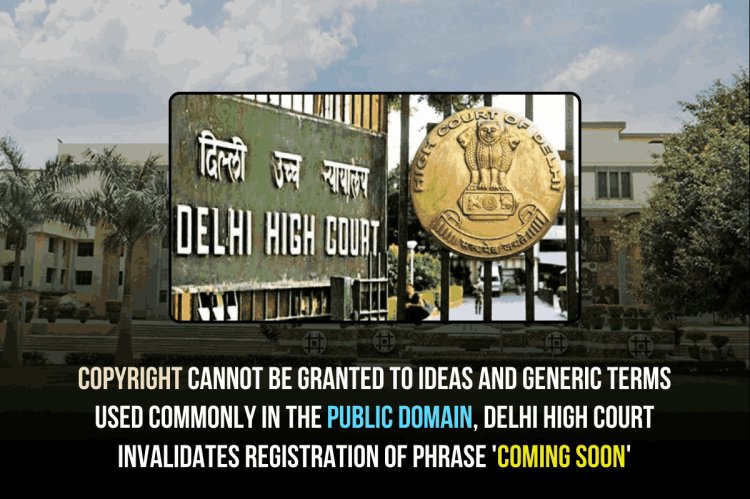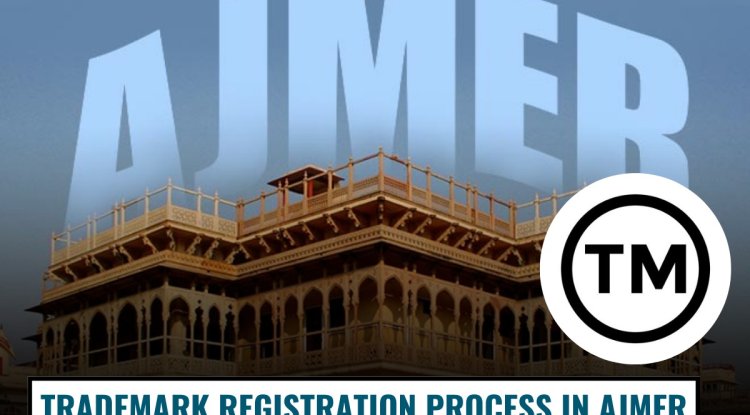DECLARATION OF A WELL-KNOWN TRADEMARK; READING IN LIGHT OF VISTARA CASE
Pursuant to Indian trademark law, specific provisions govern the recognition and protection of well-known trademarks. Distinguished from ordinary trademarks, well-known trademarks are accorded enhanced protection against infringement. While a registered trademark is safeguarded against infringement by marks related to similar or identical goods or services, a well-known trademark enjoys broader protection, extending to marks associated with dissimilar or unrelated goods or services. The well-known trademark status affords comprehensive protection, primarily safeguarding the reputation and goodwill of the proprietor, thereby preventing unauthorized use that may dilute or tarnish the mark's distinctive character and reputation. Such status prevents unfair exploitation of the mark's reputation, shielding it from misuse by third parties. Well-known trademark status safeguards against reputation harm caused by dilution or infringement. This ensures the mark's distinctive quality and reputat

INTRODUCTION
According to the Trademarks Act, 1999, a declaration of well-known status for a trademark can only be secured upon fulfilling the prescribed requirements and procedures. In 2019, Vistara, a joint venture between Tata Sons Private Limited and Singapore Airlines Limited, petitioned the court after the Registrar refused to publish their mark in the list of well-known trademarks. Prior to 2017, a trademark could only be declared well-known through a court decree. However, with the introduction of new trademark rules in 2017, the Registrar of Trademarks is now empowered to declare and register a trademark as well-known, subject to the procedures outlined in the Trademarks Act and Rules.
This legal framework was elucidated in the Vistara case before the Delhi High Court, wherein Tata Airlines filed a writ of mandamus seeking relief.
Well-Known Trademark Under Trade Mark Act and Rules
Section 2(1)(zg) of the Trademarks Act, 1999 defines “well-known trade mark”:
in relation to any goods or services, means a mark which has become so to the substantial segment of the public which uses such goods or receives such services that the use of such mark in relation to other goods or services would be likely to be taken as indicating a connection in the course of trade or rendering of services between those goods or services and a person using the mark in relation to the first-mentioned goods or services.
In essence, Section 2(1)(zg) establishes that a well-known trademark is one that has acquired a high degree of distinctiveness and reputation, such that its use in relation to unrelated goods or services would likely cause confusion and imply an unauthorized connection with the original mark owner. A well-known trademark, as per Section 9, can seek registration as a matter of right, notwithstanding earlier refusal grounds. This exception is predicated on the trademark having acquired distinctive character through prior use or being recognized as well-known before the registration application date. Section 11(2) provides additional protection for well-known trademarks. It mandates refusal of registration to a later mark if:
· The earlier mark is well-known in India;
· The later mark's use without due cause would unfairly exploit the distinctive character or repute of the earlier well-known mark; or cause detriment to the earlier mark.
Further, Section 11(8) of the Trade Marks Act of 1999 states that if a court or Registrar determines that a trademark is well-known in a relevant section of the Indian public, the Registrar must consider it a well-known trademark for registration under the Act.
Additionally, Rule 124 of Trademark Rules 2017 simplifies the process for recognizing well-known trademarks. Previously, trademark owners had to go through lengthy court proceedings to prove their mark was well-known. Now, they can directly apply to the Registrar under Rule 124(1) with supporting documents showcasing their mark's reputation and recognition. The Registrar will then determine if the mark qualifies as well-known, granting enhanced protection. This new rule saves time and effort, providing an easier way for trademark owners to secure recognition and safeguard their valuable brands.
Tata SIA Airlines (Vistara) Case
Tata SIA Airlines Limited filed a writ petition seeking inclusion of its trademark "VISTARA" in the list of Well-Known Trademarks maintained by the Trade Marks Registry. Vistara had obtained a decree from the Delhi High Court declaring "VISTARA" a well-known trademark in the case Tata Sia Limited v. Pilot18 Aviation Bookstores. Despite this, the Registrar refused to include "VISTARA" in the list, prompting Vistara to seek a writ of mandamus.
Vistara argued that the court's determination of a well-known trademark should be binding on the Registrar, and that the Registrar cannot re-adjudicate a trademark already declared well-known by a court. Vistara contended that the procedure laid down under the 2017 Rules only applies where the determination is made by the Registrar, not by a court. Vistara further argued that the distinct use of "determine" and "consider" in Sections 11(6) to 11(8) of the Trade Marks Act, 1999, should be construed literally. Vistara challenged the Registrar's argument that a prior court determination requires verification and payment of a fee, stating this interpretation would make Section 11(8) subject to Rule 124, contravening statutory interpretation principles. The Registrar argued that a separate application and fee are mandatory for inclusion in the list, even if a court has declared the trademark well-known. The Registrar claimed that Vistara's request was incomplete, lacking the prescribed form and fee.
Vistara asserted that it was prejudiced by the Registrar's refusal, as a well-known trademark functions as notice to prospective proprietors regarding the ambit of rights enjoyed by the trademark.
Submissions of Amici Curiae
Rule 124(1) does not conflict with Section 11(8) but rather serves as an administrative procedure for recording well-known trademarks. The Act and Rules provide two distinct mechanisms for determining WKTMs: one by the Registrar[7] and the other by a court[8]. When a court determines a WKTM, there is no requirement for an application under Form TM-M or payment of fees. Instead, the WKTM should be simply recorded in the List.
Relying on the Supreme Court's judgment in Whirlpool Corporation v. The Registrar of Trade Marks, Mumbai.[9], the amicus curiae emphasized the mutually exclusive jurisdictions of the Registrar and the court. The Supreme Court held that the High Court has primacy over the Registrar in all matters under the Act, and the Registrar should not interfere with proceedings pending before the High Court.
The amicus curiae proposed two parallel procedures for determining WKTMs:
· Under Rule 124(1), applications should be made to the Registrar with the prescribed form and fee.
· Under Section 11(8), a simple letter to the Registrar should suffice when a court has already determined a WKTM.
The Judgement
The Delhi High Court ruled in favour of the Registrar, dismissing Vistara's writ petition. The Court held that:
· There are two mechanisms for determining a well-known trademark: one by the Court (Section 11(8) of the Act) and the other by the Registrar (Rule 124 of the TM Rules).
· If a Court declares a trademark well-known, the Registrar cannot re-adjudicate or re-examine it.
· Rule 124 applies to both determination and inclusion of a well-known trademark in the list.
· Even if a Court declares a trademark well-known, the proprietor must comply with Rule 124, including paying the prescribed fee (INR 1,00,000/-) and filing Form TM-M for inclusion in the list.
· The Registrar's role is limited to verifying the Court's judgment and proceeding with inclusion, without re-determination or re-examination.
· The fee deposit is mandatory, and failure to do so renders the application deemed not filed.
· The Court's interpretation is fortified by the scheme of the Rules and Schedules, and the language used in Rule 124 and Form TM-M.
· The Registrar's affidavit confirming no re-determination or re-examination supports the Court's ruling.
Court clarified the Registrar's obligations and limitations when a Court declares a trademark well-known, emphasizing the distinction between determination and inclusion procedures. Vistara's failure to comply with Rule 124 and pay the prescribed fee led to the dismissal of their writ petition.
CONCLUSION
Considering the recent judgment Tata SIA Airlines Limited v. Union of India with various erstwhile relevant judgments and the relevant statutory sections under Trademarks Act and Trademark rules, it can be summed up that after the implementation of the trademark rules 2017, a trademark proprietor is mandated to follow the process for addition of their mark in official list of Well-Known Trademarks by registrar, by paying the fee of 10,0000 rupees and official request submission to the registrar even such mark has been declared as Well-known Trademark by a competent court. The TM Registry can also declare a trademark as well-known upon receiving an official request from the trademark owner in the prescribed form. However, where a mark is declared as well-known by a competent court, the registrar, then, has no discretion to determine whether the mark in issue is well-known or not. However, a trademark owner must follow the process prescribed in Rule 124 of the Trademark Rules, 2017, to be included in the official list of well-known trademarks.












